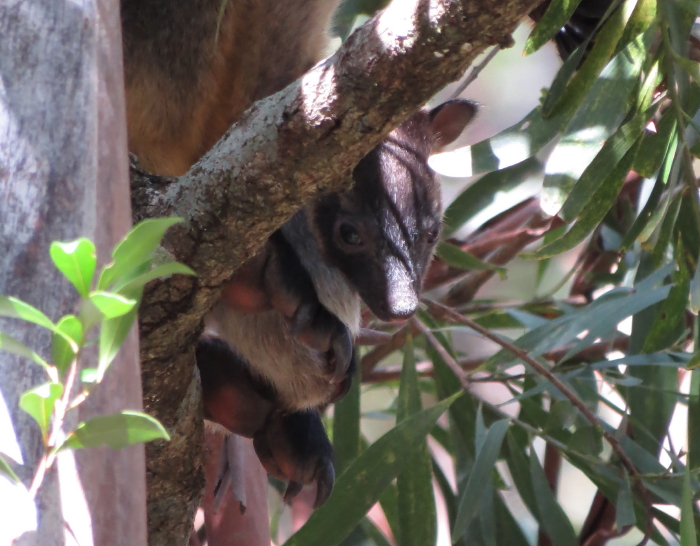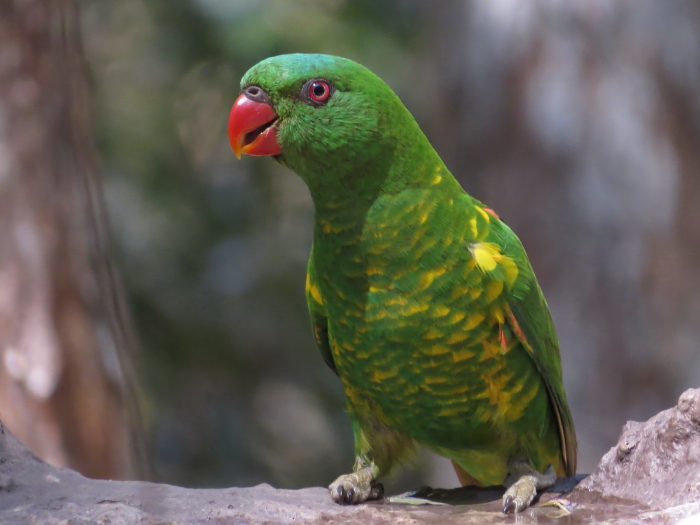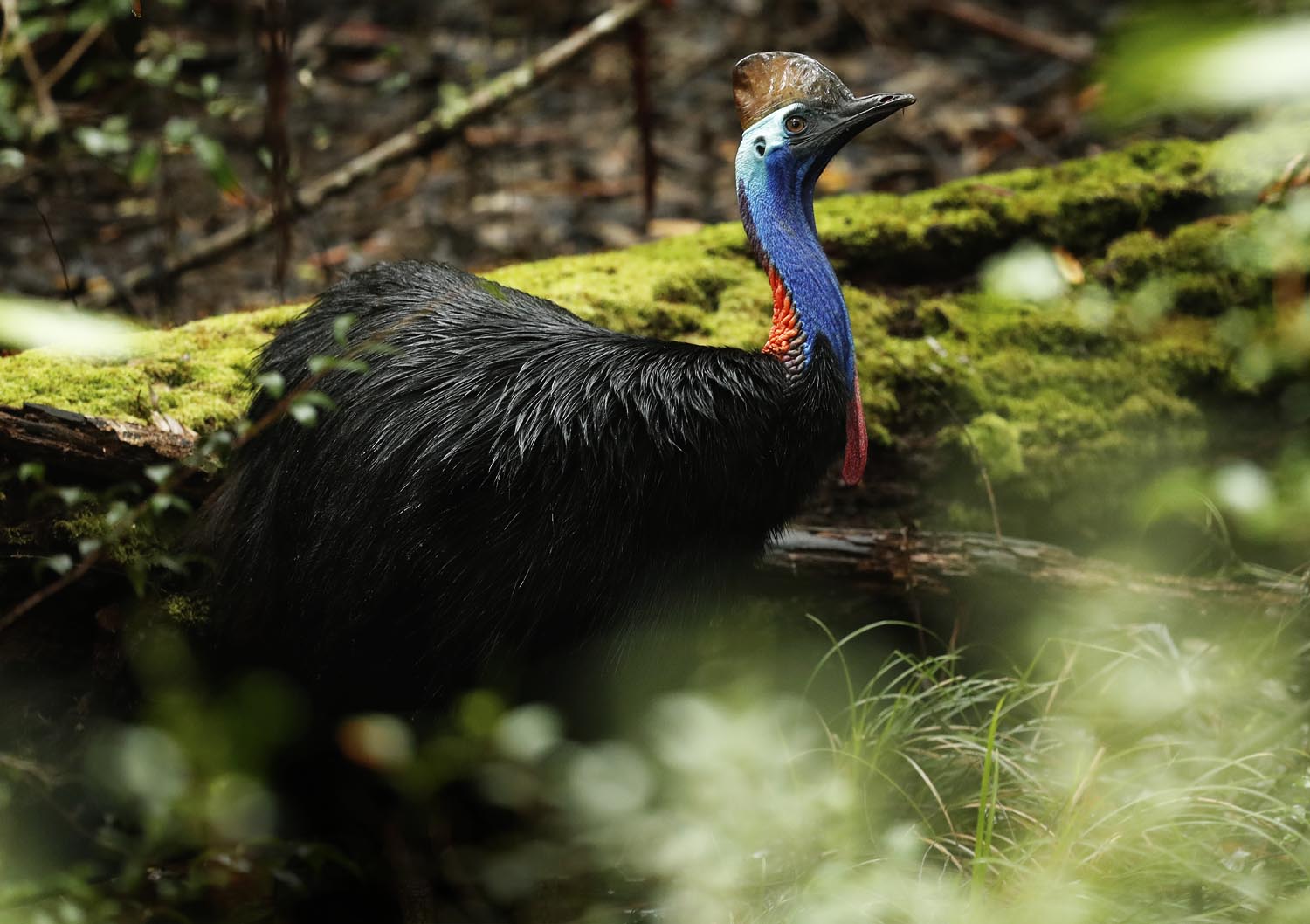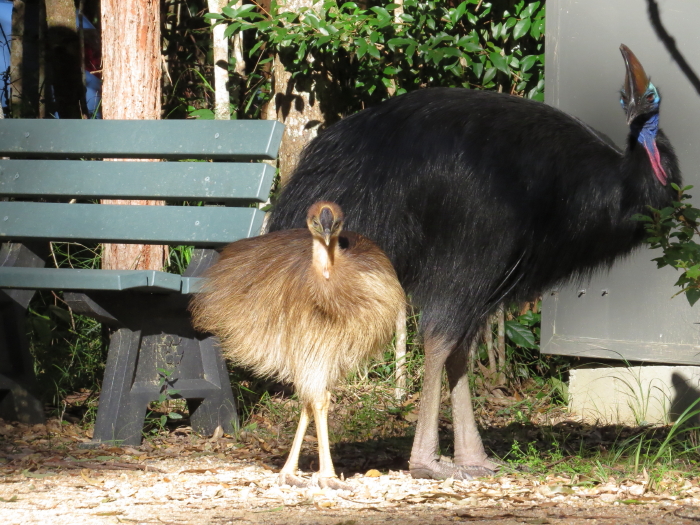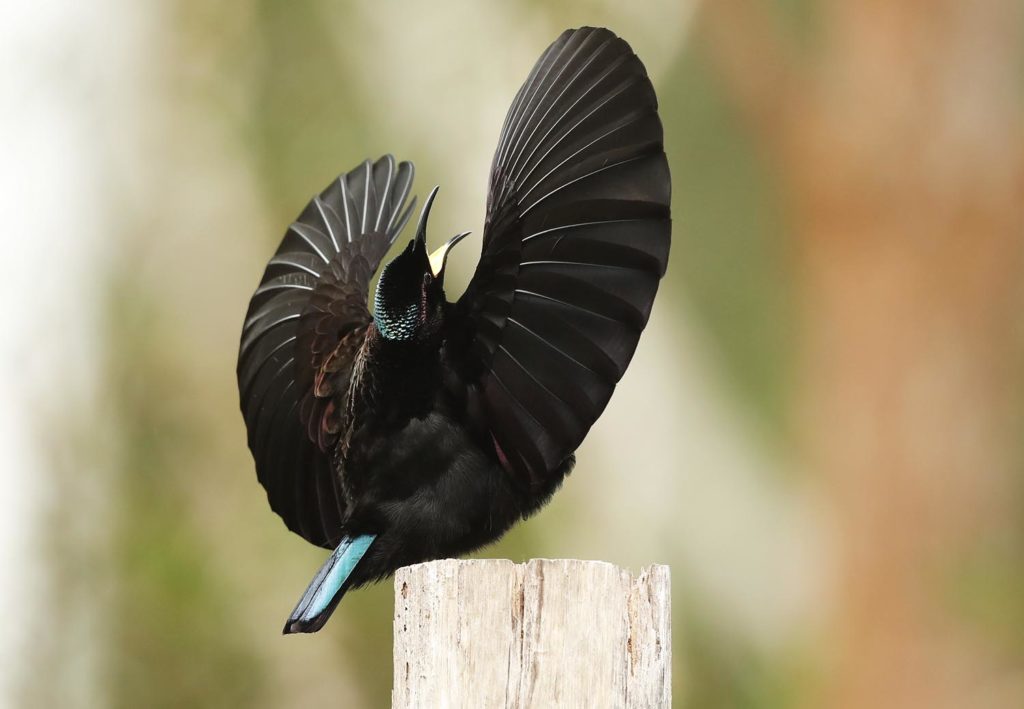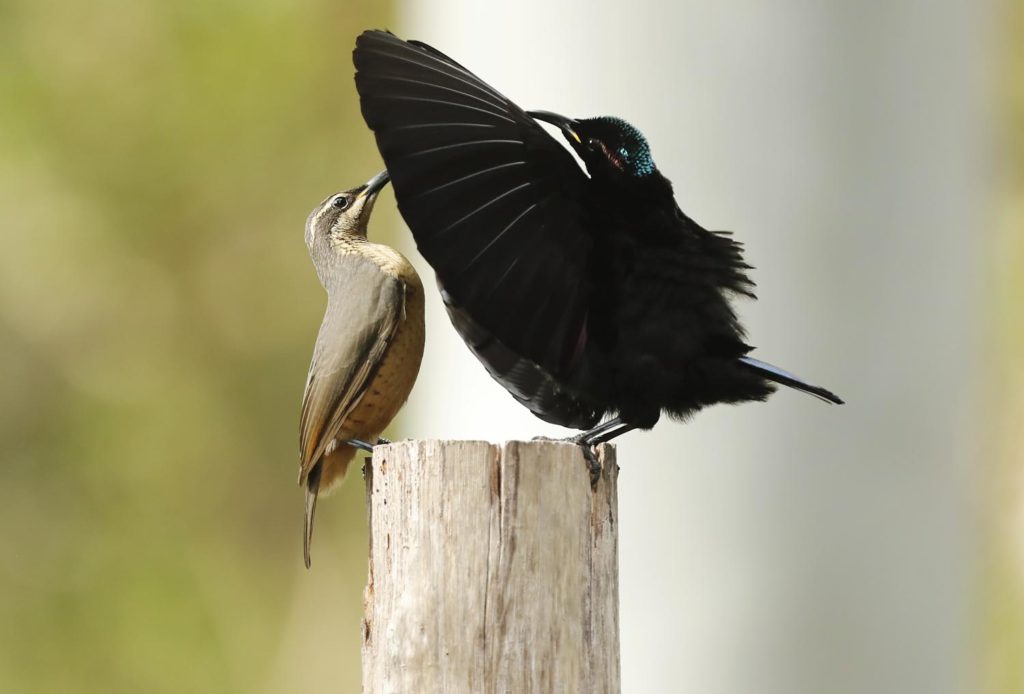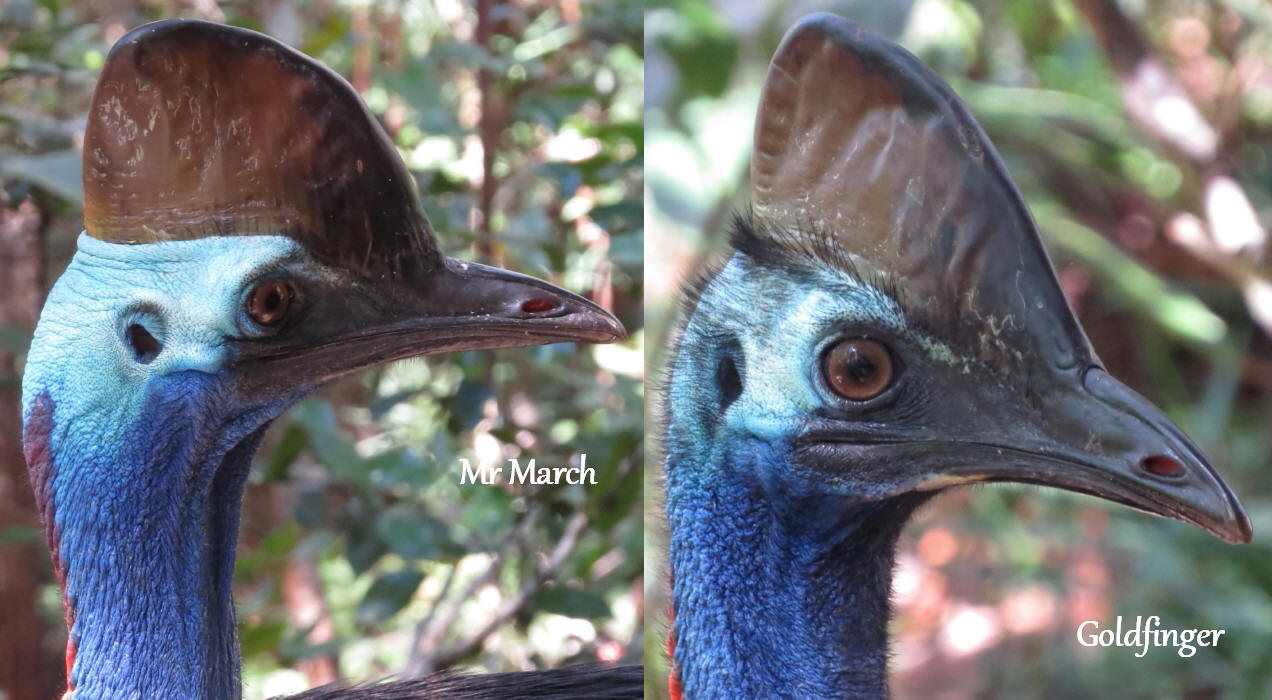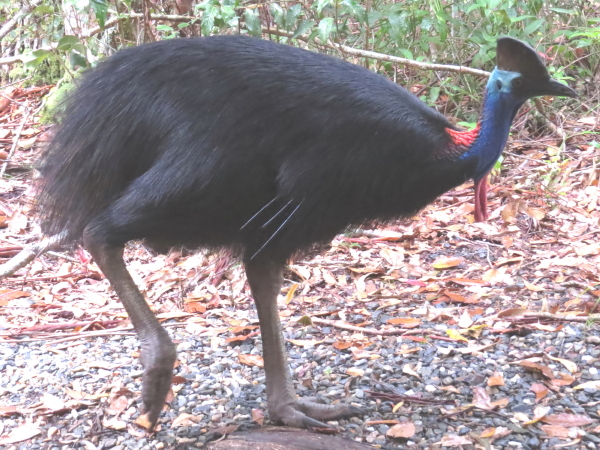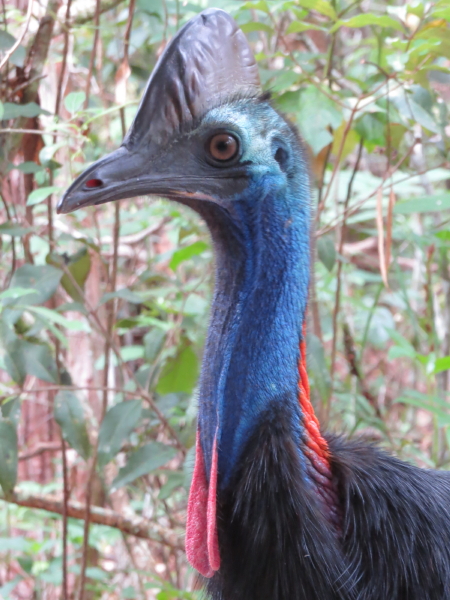
It is this time of the year again, when fruit in the rainforest becomes scarcer, but the wet sclerophyll forest produces many smaller berries, like Cissus grapes and Lilly Pillies, Mackinlaya and Acrotriche drupes.
Cassowaries frequent our forest almost daily in search of food and mates. May is usually the beginning of the mating season, and “Wattle”, the big female, has been hanging around lately, sometimes right outside our bedroom window, a disinterested bystander…

A few days ago, “Goldfinger”, the young male, with whom she mated last June, turned up at the same time, and ventured within 2 metres of her before becoming scared and running away.

Dad presented his 2 new chicks a couple of weeks ago. They are about 7 months old (he mated with Wattle in July) and are looking healthy and well-fed.

It is still difficult to tell them apart:

Their droppings look like a delicious dessert or off-colour pizza (to some). Brush-turkeys and pademelons like to pick through them.

Our male Victoria’s Riflebirds have been displaying daily (it is not really their breeding season, yet!). Another strange, and out of season observation: a female Scarlet Honeyeater collected nesting material.


